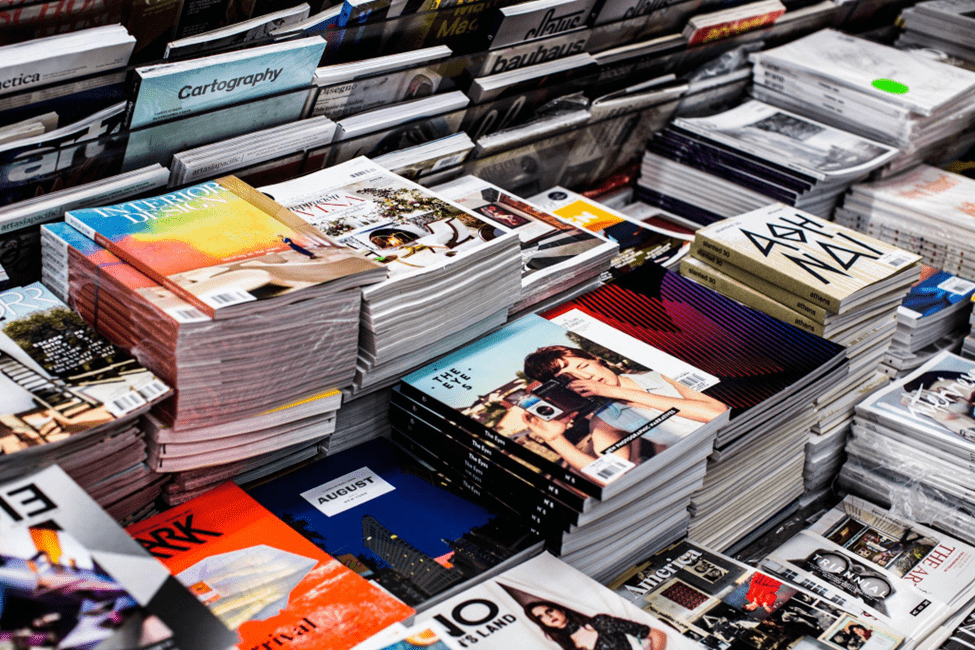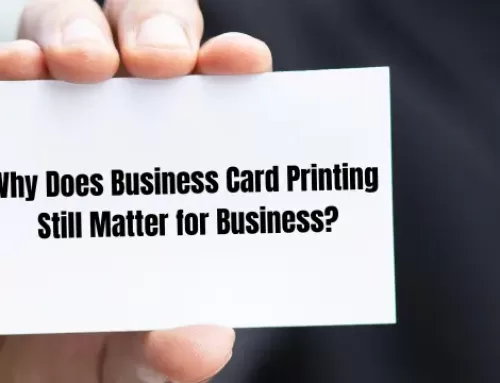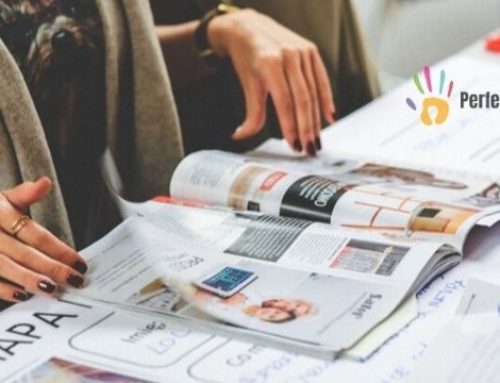If you are going to launch a new magazine, involving your printer early in the process might save you time and money later on.
You have a new idea for a printed magazine and are eager to get started. However, before you get too far into the creative aspects of writing articles and laying up artwork, you must consider the printing portion of your magazine.
Though printing is one of the final phases in bringing your vision to life, it is critical to learn as much as possible about the printing stage as soon as feasible. After all, the last thing you want is to be caught off guard by an unexpected surprise or expenditure when you’re ready to print.
So, whether you’re planning a monthly, quarterly, or other publication frequency, your goal should be to reach newsstand quality for the least amount of money. If you have any queries concerning a future magazine project, please contact Perfect Image Printing, Top printing in Los Angeles. With that in mind, here is a list of six factors that will influence the appearance and cost of your magazine…
Binding Design
Magazines are commonly bound using either the Saddle-Stitch or Perfect Binding methods. In most circumstances, the amount of pages in your magazine will define the binding type you select.
The Saddle-Stitch method is recommended if the page count is rather modest. Saddle-stitched magazines are made of folded sheets held together by wire staples. To secure the pages as a unit, staples are driven into the crease of the magazine’s spine. Despite its simplicity, the end effect is a highly professional-looking magazine.
Furthermore, saddle-stitching is a low-cost binding method. It also allows the magazine to open virtually flat. This is especially useful for artwork that spans two consecutive pages (also known as crossover images).
If your magazine has a large number of pages, the perfect binding method is advised. The pages and cover of a perfect bound magazine are glued together at the spine with a strong, flexible glue. The magazine’s other three sides are then trimmed as needed to have crisp “ideal” edges. Furthermore, unlike saddle-stitching, flawless binding frequently enables for printing on the spine of the magazine.
Measurements
The dimensions correspond to the width and height of the finished magazine (also known as the trim size). Although magazines can be printed in almost any size, keep in mind that all commercial printers offer particular page sizes as standard sizes.
The type of production equipment employed by the printer determines these standard sizes. Designing your magazine’s page size to comply to one of your printer’s standard page sizes will maximize production and keep costs to a minimum.
A magazine created with non-standard page dimensions, on the other hand, may not work well with any of your printer’s presses. As a result, the production run would be inefficient and produce low-quality paper. Excess paper creates waste and can significantly increase the cost of a magazine run.
Needless to say, knowing which page sizes your printer can generate most affordably is useful information to have before beginning to design your magazine’s layout. Not to discourage originality or ingenuity, but a few minor design adjustments now could result in significant savings afterwards. So involve your printer early in the process.
Furthermore, the size of a magazine influences not just its production cost but also the shipping cost to send the magazine to consumers. If your magazines will be mailed separately, your printer will most likely be able to give size recommendations to help keep your postage costs as low as feasible. Postage can be reduced by changing your page dimensions by as little as 1/2″.
Amount
The type of printing press best suitable for creating magazines will be determined by the number of magazines produced in a single production run. Because most established magazine titles have a huge audience and wide distribution, the run quantities are large enough to justify manufacturing on high-speed web presses.
A web press is an offset printing press that uses large rolls of paper to feed it. The paper forms a continuous “web” through the press as it unwinds from the roll. A system of rollers holds the web of paper taut as it moves through the press. After receiving the inked images, the paper is sliced into smaller pieces. For big runs of magazines and other multi-page documents, a web press is the most cost-effective printing process.
A start-up magazine, on the other hand, is unlikely to have a substantial print run…at least not in the beginning. As a result, the first runs of a newly launched magazine are more likely to be produced using a sheet-fed printing process. Unlike a web press, which is fed from a continuous spool of paper, a sheet-fed press feeds individual sheets of paper one after the other.
Although both web presses and sheet-fed presses produce high-quality printing, magazines produced on a web press will have a lower unit cost than magazines produced on a sheet-fed press. However, the output volume must be significant enough to warrant a web press run… a volume threshold that a new magazine title may take some time to reach
Furthermore, even though the unit cost of a magazine drops as order quantity grows, it is still prudent to determine which run size is best for your individual case. A lower unit cost is fantastic, but only if you order more magazines than you’ll need.
The number of pages
Aside from deciding the binding type, the page count of your magazine (together with the total number of magazines required) will assist your printer in calculating how much paper is required to complete your project.
Be cautious while relaying the magazine’s page count to your printer. Page counts are frequently miscommunicated. Open a magazine, for example, and flick through it. Notice that each of these sheets has two sides when you flip through them. Each side of these sheets is referred to as a single page by your printer. As a result, every sheet in the magazine represents two pages to a printer. Those who are new to printing, on the other hand, frequently refer to each sheet within the magazine as one page.
Colors of Ink
Many publications have a full-color cover and full-color pages. This is due to the fact that full-color delivers the greatest visual effect. This is especially true if your publication takes advertising. There is frequently a mix of full-color graphics and black-ink text.
Should it be assumed that employing more black-ink pages than full-color pages will save money? So, sometimes yes, sometimes no. It truly depends on the magazine’s layout and where the black-ink pages lie in respect to the color pages.
In addition, your printer may inquire whether any ink coverage goes all the way to the edge of the pages or cover (known as a Bleed). If this is the case, the artwork arrangement must be somewhat larger than the finished trim size. Crop markings will also need to be placed so that your printer knows exactly where to chop off the bleed regions. If in doubt, consult with your printer before proceeding with the design phase.
Paper Parameters
The internal pages of most periodicals are printed on very thin paper stock. One explanation for the low stock is that magazines are not commonly used. In most situations, a magazine is only read a few times. This means that long-term durability was not a consideration in the magazine’s design.
Another reason for using light stock is that many magazines are mailed out. A lighter paper stock means less weight, which might save money on postage. A third argument is that thinner paper helps reduce bulkiness, which can be a concern if the magazine has a high page count. Another factor is that thinner paper is less expensive than thicker paper.
In point #3, we suggested the use of web presses. A web press can print on incredibly thin paper. A sheet-fed press, on the other hand, has issues when printing on very lightweight stock. This means that a freshly started magazine may have to utilize thicker paper for its pages at first because the output volume may be too low for a web press. However, when the magazine grows in popularity, production can shift from a sheet-fed press to a web press to take advantage of the efficiencies associated with a web press. A faster running speed, increased paper yield, and the capacity to print on thinner (and less expensive) paper types are among the benefits.
In addition to paper thickness, the paper properties you choose, such as texture and shine level, are heavily influenced by the image you want to create. A heavier, lustrous cover, for example, conveys a higher image of quality than a thinner, duller cover.
A variety of paper coatings are also available to improve the look and durability of your magazine. For example, you might like to have a transparent coating added to the cover of your magazine, such as a gloss aqueous coating or a high-gloss UV. A high-gloss UV coating not only increases durability, but it also improves the brilliance of the ink colors and draws attention to your cover artwork.
If you have any queries concerning a future magazine project, please contact Perfect Image Printing, a print shop in Los Angeles. Alternatively, if you already know your parameters and would want a price, please go here. We are excited to help you!





Leave A Comment